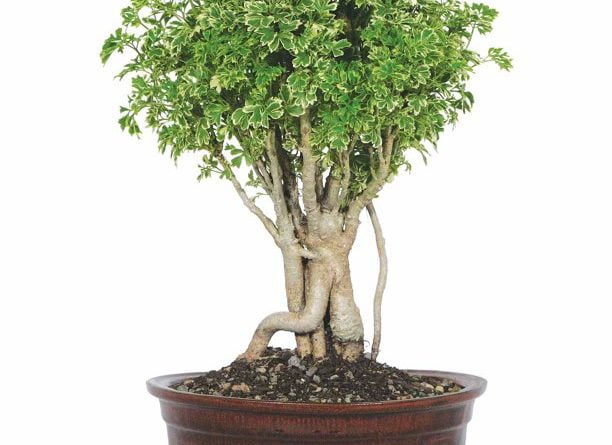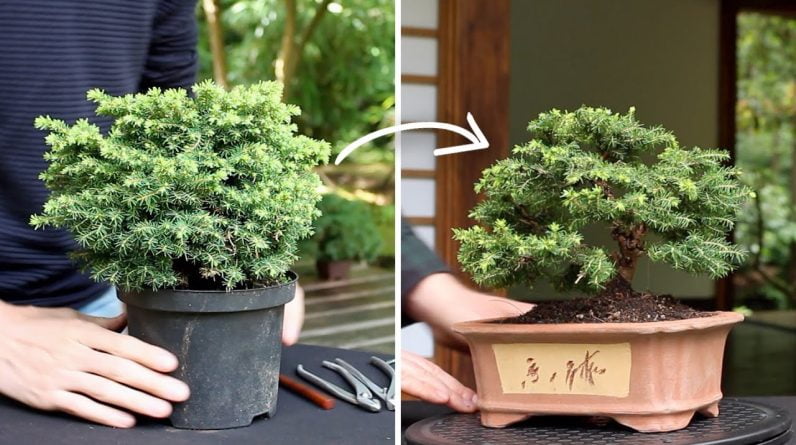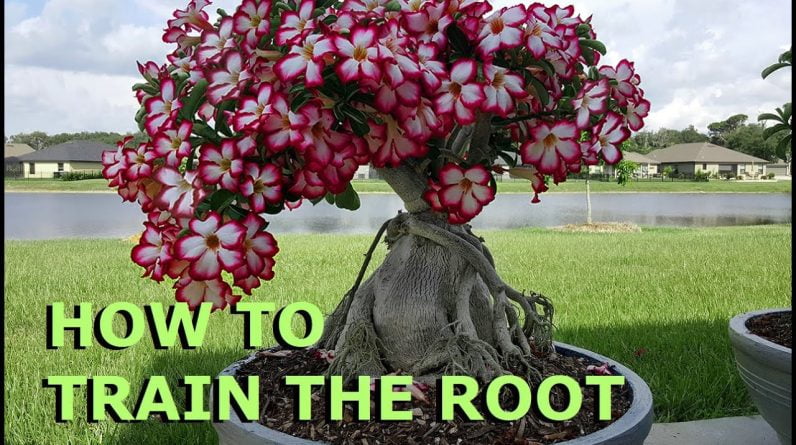Get ready to embark on a journey into the world of Desert Rose Bonsai, where we’ll explore all the care tips and techniques you need to know.
From pruning to training, repotting to fertilizing, we’ve got you covered. Whether you’re a seasoned bonsai enthusiast or just starting out, this article will provide you with all the knowledge you need to nurture and care for your very own Desert Rose Bonsai.
So buckle up and get ready to dive into the fascinating world of these stunning miniature trees.
Benefits of Desert Rose Bonsai
When it comes to adding beauty to any indoor or outdoor space, a Desert Rose Bonsai is an excellent choice. With its unique and stunning appearance, this bonsai variety can instantly enhance the aesthetic appeal of any environment. The vibrant colors of the blossoms, ranging from red and pink to yellow and purple, create a visually striking focal point. Whether placed on a patio, office desk, or living room, the Desert Rose Bonsai is sure to attract attention and admiration.
Aside from its visual appeal, this bonsai variety also provides a sense of tranquility and relaxation. The art of bonsai is known for its meditative qualities, and caring for a Desert Rose Bonsai can have a calming effect on the mind. This bonsai’s serene presence can help reduce stress and anxiety, making it a perfect addition to any space where you want to create a peaceful atmosphere.
One of the best things about Desert Rose Bonsai is that it is easy to care for. Even if you are a beginner in the world of bonsai, you can successfully maintain the health and beauty of this plant. With proper care and attention, your Desert Rose Bonsai will thrive and continue to bring joy and tranquility to your surroundings.
Choosing the Right Desert Rose Bonsai
When selecting a Desert Rose Bonsai, there are a few factors to consider to ensure you choose the right one for your needs and preferences.
The size and shape of the bonsai are important considerations. Determine whether you want a larger, more mature bonsai or a smaller, more compact one. Consider the space you have available and the visual impact you want to achieve. Additionally, think about the shape of the bonsai. Some Desert Rose Bonsai have a more upright form, while others have a cascading or windswept shape. Choose a shape that appeals to you and complements your space.
Another crucial aspect to consider is the health and root condition of the bonsai. Look for a plant that has healthy leaves, free from any signs of pests or diseases. Check the roots to ensure they are well-rooted and not overly crowded in the pot. A healthy and well-established root system is vital for the long-term health and survival of the bonsai.
Lastly, choose a Desert Rose Bonsai variety that suits your preferences in terms of color, blossom size, and overall appearance. There are various varieties available, each with its unique characteristics. Take your time to explore the different options and choose the one that resonates with you.

Light and Temperature Requirements
To ensure the optimal growth and health of your Desert Rose Bonsai, it’s essential to provide it with the right amount of light and maintain suitable temperature conditions.
Place the bonsai in a location with bright indirect light. Direct sunlight can be too intense and may cause sunburn on the leaves. A spot near a window, where the bonsai receives filtered light throughout the day, is ideal. If you are growing the bonsai outdoors, make sure to provide it with shade during the hottest part of the day to prevent sun damage.
Extreme temperatures can be detrimental to the Desert Rose Bonsai. Protect it from freezing temperatures in winter and keep it away from any cold drafts. On the other hand, excessive heat can cause stress to the plant, so it’s crucial to shield it from intense heatwaves or prolonged exposure to high temperatures.
Maintain a temperature range between 60-90°F (15-32°C) for your Desert Rose Bonsai. This range provides the ideal conditions for growth and ensures that the plant remains healthy and vibrant.
Watering
Proper watering is vital for the health of your Desert Rose Bonsai. Follow these guidelines to ensure your bonsai receives the right amount of water:
Water the bonsai thoroughly when the soil feels dry. Stick your finger about an inch into the soil to check for moisture. If the soil feels dry at that depth, it’s time to water the bonsai. Water until the water flows out of the drainage holes in the pot, ensuring that the roots are thoroughly saturated.
Avoid overwatering the bonsai or allowing the soil to become waterlogged. Excess water can lead to root rot and other issues. Always provide proper drainage to prevent water from pooling at the bottom of the pot. If your bonsai is placed indoors, make sure to place a tray or saucer beneath the pot to catch any excess water.
Adjust the watering frequency based on the season and environmental conditions. Desert Rose Bonsai typically require more water during the warmer months and less water during the dormant period. Observe the soil moisture and the overall appearance of the bonsai to determine when it needs watering.

Soil and Potting
Choosing the right soil and potting techniques is essential for the well-being of your Desert Rose Bonsai.
Use a well-draining and nutrient-rich bonsai soil mix. The soil should allow water to pass through easily while retaining enough moisture for the roots. A mixture of Akadama, pumice, and lava rock is commonly used for Desert Rose Bonsai.
Repotting the bonsai every 2-3 years helps refresh the soil and prevent root congestion. During repotting, carefully remove the bonsai from its current pot and trim back the roots. Replace the old soil with fresh bonsai soil, ensuring that the roots are placed in the center of the pot. Repotting also provides an opportunity to prune the branches and shape the bonsai.
Choose a pot that allows for proper drainage and is suitable for the size of the bonsai. The pot should be slightly larger than the root system to allow for future growth. Bonsai pots are typically shallow and have drainage holes at the bottom to prevent waterlogging.
Fertilizing
To promote healthy growth and vibrant blooms, it’s important to fertilize your Desert Rose Bonsai regularly.
During the growing season, use a balanced liquid fertilizer. Follow the manufacturer’s instructions for the dilution ratio and frequency of application. Fertilize approximately every two weeks to provide the bonsai with essential nutrients.
Avoid overfertilization, as it can damage the roots and lead to nutrient imbalances. It’s better to under-fertilize slightly than to overdo it. Observe the bonsai’s growth and adjust the fertilizer application accordingly.
:strip_icc()/desert-rose-bonsai-care-ad1e0ee9b9ba42c9abe0bb717a47950f.jpg)
Pruning and Shaping
Pruning and shaping are essential techniques for maintaining the appearance and structure of your Desert Rose Bonsai.
Prune the bonsai regularly to maintain its shape and remove any dead or overgrown branches. Use sharp and clean pruning shears to make clean cuts. Pruning encourages the growth of new branches and keeps the bonsai compact and well-proportioned.
In addition to pruning, shaping the bonsai is an art form in itself. You can wire the branches and gently bend them into the desired position to create the desired aesthetic effect. Be careful not to apply too much pressure or stress on the branches, as they can snap or break. Slow and gradual shaping is recommended to avoid damage to the bonsai.
Pests and Diseases
Regular inspection is necessary to ensure that your Desert Rose Bonsai remains free from pests and diseases.
Common pests that can affect the bonsai include spider mites and scale insects. Carefully inspect the leaves and stems for any signs of infestation, such as webbing, small insects, or discolored spots. If you notice any pests, treat them with appropriate insecticides or organic methods, depending on your preferences.
Monitor the bonsai for signs of diseases, such as root rot or fungal infections. Ensure that the bonsai is not overwatered and has proper drainage to prevent these issues. If you suspect any diseases, consult a horticulturist or expert to identify the problem and provide the necessary treatment.
:max_bytes(150000):strip_icc()/grow-desert-rose-plants-indoors-1902974-hero-64a97e2c287a4da38dab14acd4bfb8c4.jpg)
Winter Care
During the winter months, your Desert Rose Bonsai requires special care to ensure its survival.
Protect the bonsai from frost and cold drafts. Cold temperatures can harm the delicate roots and foliage of the bonsai. Move it to a warmer location, such as an indoor space near a window, or cover it with a frost cloth to shield it from freezing temperatures.
Reduce watering frequency during the dormant period. The bonsai’s growth slows down during winter, so it requires less water. Let the soil partially dry out between waterings to prevent overwatering.
Common Mistakes to Avoid
To keep your Desert Rose Bonsai thriving, it’s important to avoid common mistakes that can hinder its growth and health.
One of the most common mistakes is overwatering the bonsai. Too much water can lead to root rot and other complications. Always check the soil moisture before watering and ensure that the soil has proper drainage.
Neglecting to prune and shape the bonsai can also hinder its growth and appearance. Regular pruning helps maintain the bonsai’s shape and encourages new growth. Additionally, shaping the branches through wiring and bending is crucial for creating the desired aesthetic effect.
Using improper soil or potting techniques can also be detrimental to your Desert Rose Bonsai. Make sure to use a well-draining bonsai soil mix and repot the bonsai every 2-3 years to refresh the soil. Choose a pot that allows for proper drainage and is suitable for the size of the bonsai.
By avoiding these common mistakes and following the care tips and techniques mentioned above, you can enjoy the beauty and tranquility that a Desert Rose Bonsai brings to your indoor or outdoor space. With its stunning blossoms, easy care requirements, and meditative qualities, this bonsai variety is a wonderful addition to any collection. Take the time to choose the right bonsai, provide the optimal growing conditions, and enjoy the rewards of cultivating this captivating plant.

Creativity in writing is becoming a scarcity.
Between the constant temptation to dance for the algorithm and the staggering advance of artificial intelligence, our world is spiraling into what I believe to be a creative crisis.
For us to remain an emotionally-aware race, while at the same time pushing humanity forward, we must cultivate and champion creativity both in ourselves and in the generations to come and write as we feel.
This is why I’m dedicating the next decade of my life to exploring the subject of creativity as both an artist and teacher.
I hope you enjoy my content
Best
James
My Bonsai Journey





